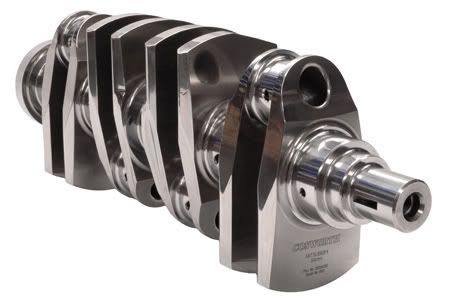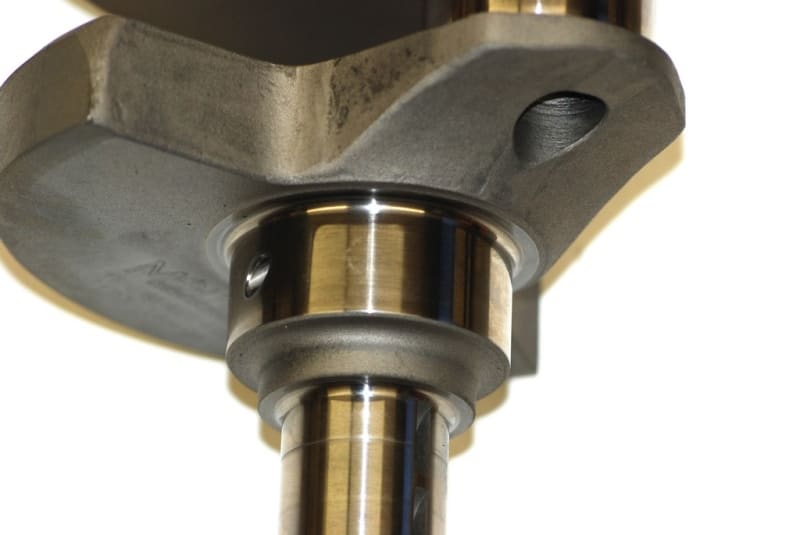Navigation
Install the app
How to install the app on iOS
Follow along with the video below to see how to install our site as a web app on your home screen.
Note: This feature may not be available in some browsers.
More options
Style variation
-
Congratulations TugboatEng on being selected by the Eng-Tips community for having the most helpful posts in the forums last week. Way to Go!
You are using an out of date browser. It may not display this or other websites correctly.
You should upgrade or use an alternative browser.
You should upgrade or use an alternative browser.
Crankshaft counterweight shape ? 1
- Thread starter Rat5
- Start date
- Status
- Not open for further replies.
BrianPetersen
Mechanical
Available space, clearance to other parts of the engine, perhaps a desire to change the moment of inertia (using the crank as part of the flywheel), manufacturing considerations, and perhaps a degree of whatever the designer felt like doing when they drew it up.
btrueblood
Mechanical
Differences in size/weight of pistons, i.e. a difference in the mass being balanced, and perhaps a difference in "how much" of the piston mass is being attempted to be balanced?
As mentioned, its all a matter of balance. The "ears" on the counterweights exist largely to offset that cylinder's center of mass from the rod journal to account for the mechanics of crossplane firing. Your first image appears to be a flat-plane crank which doesn't require nearly as much balancing as similar crossplane cranks.
LionelHutz
Electrical
My guess is that one is an inline 4-cylinder crank and the other is a V8 crank. The V8 crank would have the wider counterweight to balance the 2 piston assemblies moving in different directions.
The balance weight acts at its centre of gravity. Differences in shape will affect rotational inertia but make no difference to balance. As Brian hinted, the ears are usually needed to achieve the desired balance weight withing the radius constraints of the crankcase.
je suis charlie
je suis charlie
-
1
- #7
GregLocock
Automotive
I was once part of the design team on a new crank for our 3.9/4.0 litre I6 engine. We wanted to improve the torsional and radial bending characteristics to improve engine sound quality. We worked with a mob called ISVR in the UK, who decided that fundamentally the problem was we had a cast steel crank that wasn't really stiff enough. No real surprises there, we'd gone slim on the mains because of friction.
So, they said well if you've got a floppy bit of spaghetti, why not balance it as if it was 6 seperate single cylinder engines, ie let each cylinder be balanced in its own right. Then the floppy spaghetti problem doesn't really matter.
So, one year later the 12 counterweight crank was born. Sound quality in the important (to me) 200-400 Hz was definitely improved, both subjectively and objectively. Sadly it weighed 1 kg more than the old 8 counterweight design and so although it got into production it was cost reduced out 2 years later.
Then we upped the size of the mains and everybody except fuel consumption people were happy. But they were happy anyway because of other good things.
Cheers
Greg Locock
New here? Try reading these, they might help FAQ731-376
So, they said well if you've got a floppy bit of spaghetti, why not balance it as if it was 6 seperate single cylinder engines, ie let each cylinder be balanced in its own right. Then the floppy spaghetti problem doesn't really matter.
So, one year later the 12 counterweight crank was born. Sound quality in the important (to me) 200-400 Hz was definitely improved, both subjectively and objectively. Sadly it weighed 1 kg more than the old 8 counterweight design and so although it got into production it was cost reduced out 2 years later.
Then we upped the size of the mains and everybody except fuel consumption people were happy. But they were happy anyway because of other good things.
Cheers
Greg Locock
New here? Try reading these, they might help FAQ731-376
The answer on counterweighting is always, "It depends." It depends on number of cylinders, in-line, Vee (if vee, the angle) or boxer, RPM range, iron or aluminum block, RPM range, specific output, and even manual, automatic or CVT.
jack vines
jack vines
- Status
- Not open for further replies.
Similar threads
- Replies
- 26
- Views
- 5K
- Replies
- 5
- Views
- 526
- Locked
- Question
- Replies
- 10
- Views
- 851
- Replies
- 3
- Views
- 872


